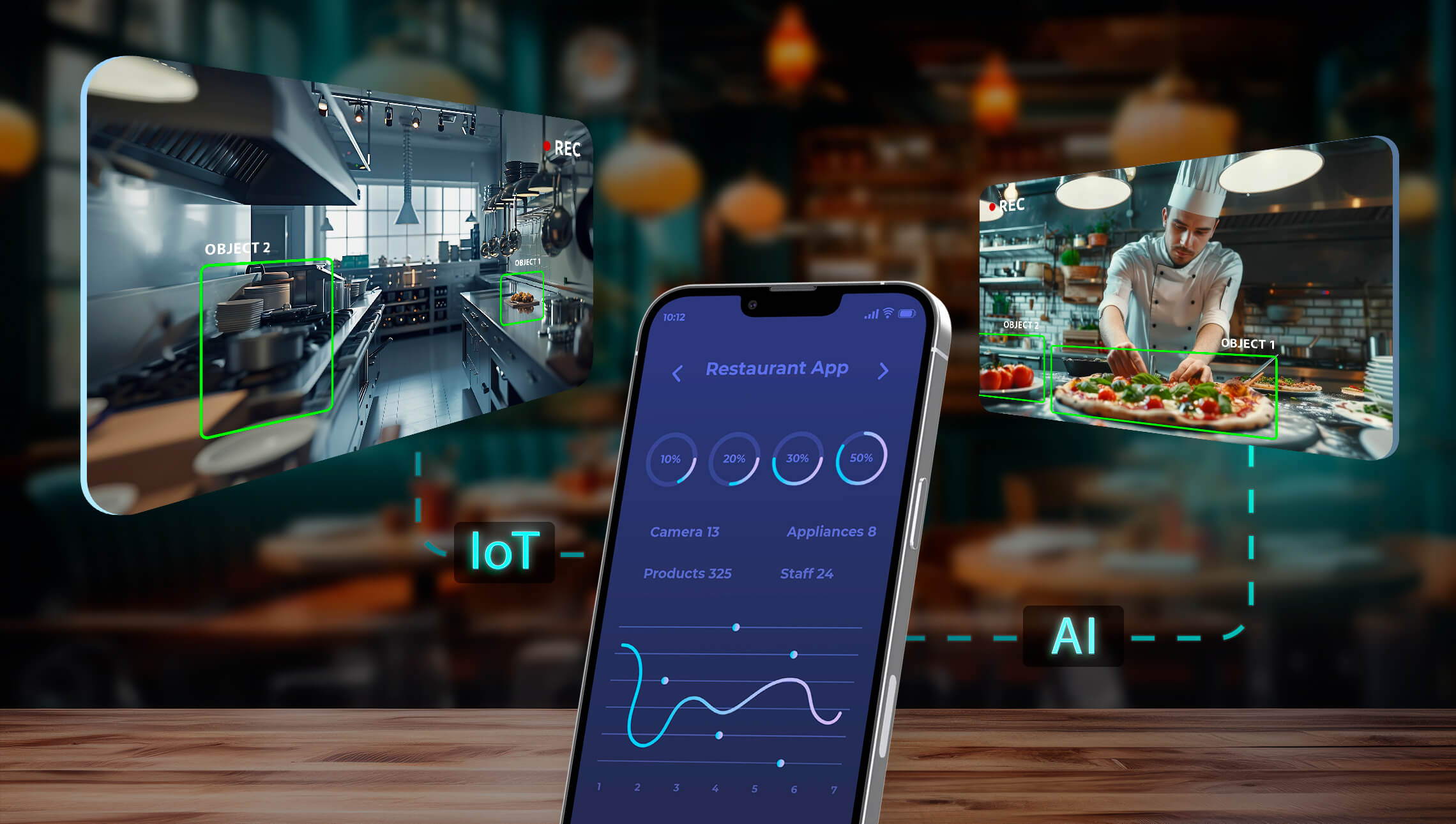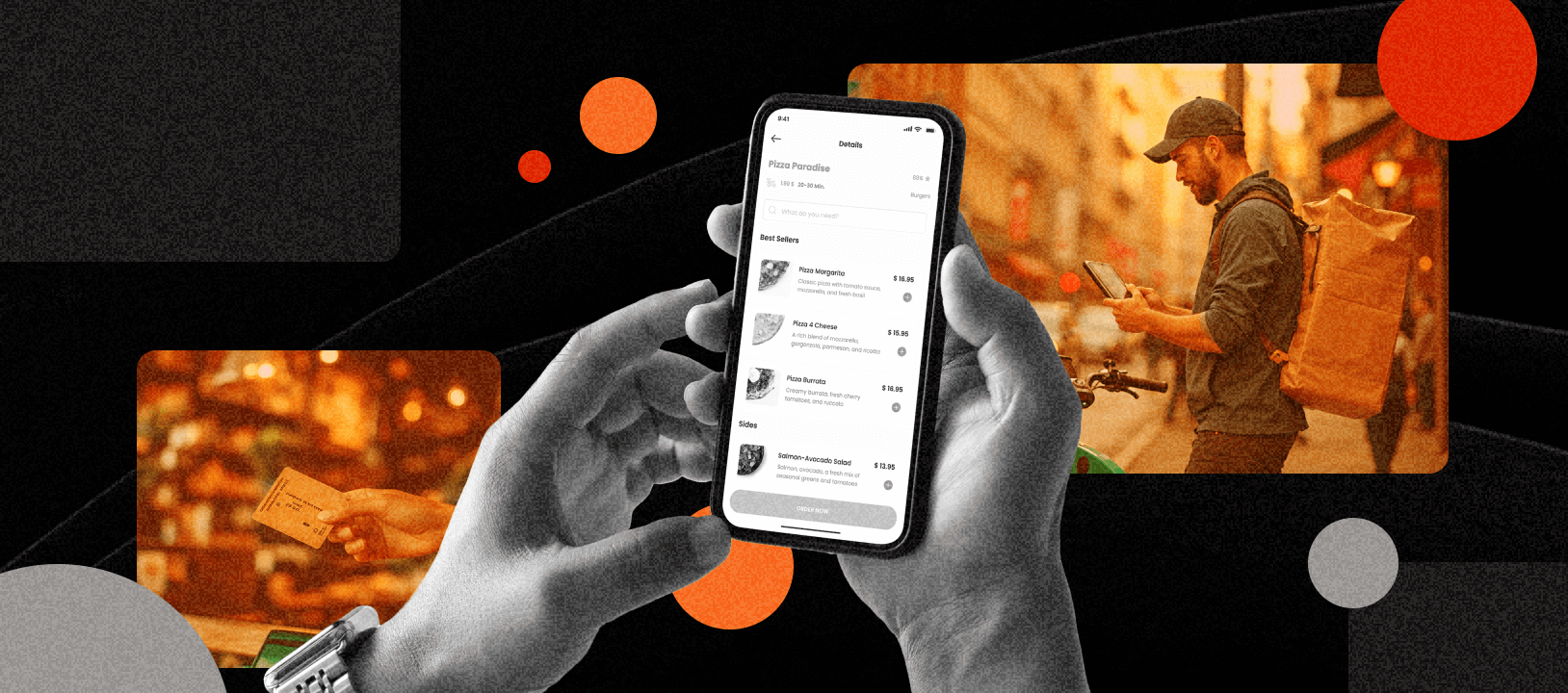With automation on the rise, fast-food chains are investing in advanced technology to benefit workers and customers. Beyond customer-facing innovations, many brands focus on back-of-house improvements. As food, labor, and energy costs rise, leading QSR brands strive to unlock operational efficiency — automating inventory management with AI and IoT or cutting energy waste and expenses with energy management systems.
This is the second part of our series on how cutting-edge technologies transform QSR businesses and drive sustainable growth.
Accurate Inventory Management
According to the UN, over 1 billion tonnes of food go to waste globally each year. This not only severely damages the environment but also takes a toll on the QSR industry’s bottom line, costing the US restaurant sector over $162 billion annually.
The main reason for restaurant food waste is poor inventory planning, as QSRs often overestimate demand or miscalculate inventory levels due to inaccurate and insufficient data, resulting in unsold perishable food being wasted. Traditional forecasting methods, such as relying on historical sales data or manual guesswork, are often imprecise and cannot explain demand anomalies. QSRs must consider the unique environment of each location and factors like events, weather, and supply chain disruptions, making a nuanced demand forecasting strategy essential. This is where AI and big data can step in.
Implementing AI-driven inventory management systems in large restaurant chains can optimize inventory levels, reducing excess stock by up to 35% and enhancing service efficiency by 65%, as reported by McKinsey.
Early adopters are already experiencing these substantial advantages — Yum! Brands, for example, is leveraging the power of AI and machine learning across 3,000 U.S. locations to predict the actual amount of groceries needed.
The company’s recommended ordering module provides weekly order quantity suggestions to restaurant managers. It significantly minimizes product waste and intra-store inventory transfers. The AI system also integrates a module for predicting cooking durations in response to customer demand.
AI-powered systems analyze massive amounts of data from various sources – point-of-sale, reservations, and labor scheduling, as well as external data like local events, trends, seasonality, weather, and traffic. This deep analysis uncovers hidden patterns, enabling precise demand predictions and inventory adjustments. For example, if an AI algorithm predicts a local football match will likely boost customer turnout, a QSR might increase stocks of fan-favorite items like burgers to meet the expected demand.
As a result, forecasting software enhances order accuracy, reduces waste, and ensures efficient service. These improvements, in turn, foster a dynamic dining experience that delights customers.
Optimizing Inventory Planning with IoT
Integrating IoT technologies into smart inventory management also helps QSRs overcome forecasting challenges and adjust to fluctuating demand. The IoT network links essential restaurant components, such as temperature sensors, smart appliances, cloud POS, cameras, and inventory systems. Additionally, operational data, like transaction records, can be smoothly integrated into live data streams.
This integrated network provides companies with the ability to collect and analyze real-time and historical data, offering visibility and precise control over both kitchen operations and the coordination between front-of-house and back-of-house staff. Cloud-based machine learning then leverages this data to generate accurate inventory forecasts, making them even more precise as the data volume increases.
Say you already have a predictive model running to determine the optimal quantity of a popular item to cook every minute. It analyzes sales data and inventory levels at various restaurants to make its estimates. However, due to unexpected surges in demand or local events, the model’s predictions may not always be precise. To address this, it can also receive real-time data from point-of-sale systems and fryers about the quantity of food being prepared. This allows the model to adjust its forecast on the go, providing the kitchen staff with live guidance to cook just enough to meet demand without exceeding it.
Trimming Waste and Expenses with Energy Management Systems
The fast food industry is recognizing the importance of energy efficiency, which benefits the environment and offers substantial cost savings. By curbing energy consumption, QSR chains can reduce energy waste and expenses by 20-30%. Moreover, today’s consumers are increasingly environmentally conscious and support businesses that reflect their values. With this in mind, there is a growing interest in the measures companies are taking to contribute positively to the world.
KFC franchises are actively adopting energy-saving strategies, setting the standard for best practices in the fast-food industry. With a focus on energy efficiency, KFC is optimizing kitchen electricity usage with innovative energy management systems and testing new optimization systems to ensure peak equipment efficiency. And it’s working. In Malaysia, they have already reduced energy usage by 18%. In the UK, they are on track to save over 5.4 million kWh in the next five years. These initiatives not only minimize energy wastage and benefit the environment, but also deliver cost savings for franchise partners.
Chipotle is also on a mission to reduce its environmental impact through technological advancements! By implementing smart energy management systems in many of their restaurants, Chipotle is optimizing kitchen equipment usage, reducing energy consumption, and streamlining costs.
As a result, food chains can transform their restaurant units into energy-efficient powerhouses and cut utility bills, all thanks to real-time asset monitoring and control.
IoT-connected restaurant devices now feature compact, wireless sensors that continuously monitor, collect, and securely transmit data to the cloud. Any temperature deviations trigger immediate alerts for swift action. These sensors offer versatile customization with multiple threshold settings and data storage. And the best part? Beyond temperature, they track humidity, water levels, vibrations, light changes, gas detection, weight, voltage, and motion. Operating 24/7, they integrate with various dashboards for real-time monitoring and trend analysis. A cloud-based portal provides a complete view of power consumption across all locations, allowing energy settings control from a single digital device.
Regular innovation fosters ongoing growth, and it’s time for your business to seize the opportunity! Stay tuned as we continue to bring you the latest tech innovations in QSR, or contact us to keep your business ahead of the curve!









